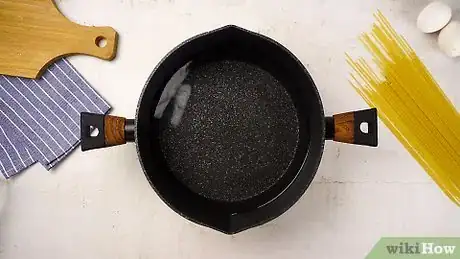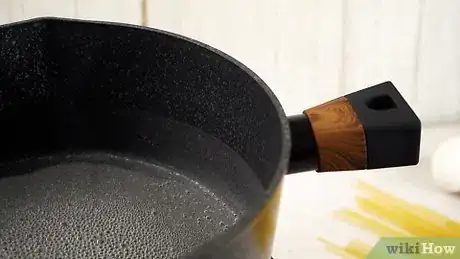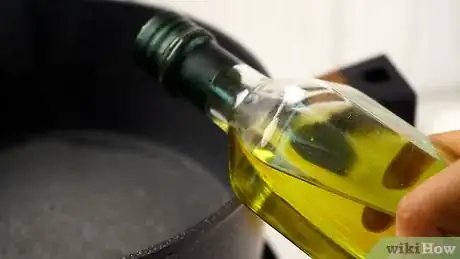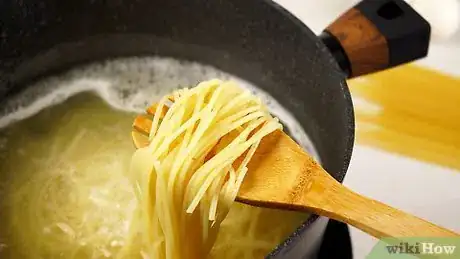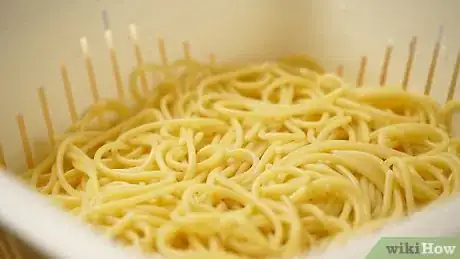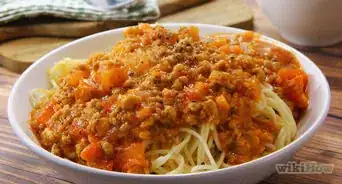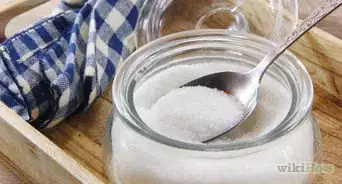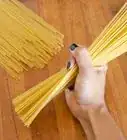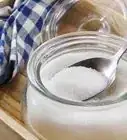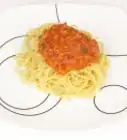wikiHow is a “wiki,” similar to Wikipedia, which means that many of our articles are co-written by multiple authors. To create this article, volunteer authors worked to edit and improve it over time.
There are 10 references cited in this article, which can be found at the bottom of the page.
The wikiHow Culinary Team also followed the article's instructions and verified that they work.
This article has been viewed 121,300 times.
Learn more...
Making perfect pasta is an essential kitchen skill. Chances are, if your spaghetti is sticking together, you are committing a small culinary faux pas, like rinsing the pasta or using too little water. Good spaghetti is all about timing, from the first time you stir to when you coat the pasta with sauce.
Steps
Perfecting Pasta Water
-
1Ensure you have a very large pasta pot. A pasta pot that is seven quarts (6.6l) or larger will allow you to cook a pound of pasta. Cooking with more than enough water also prevents clumping, sticky pasta.[1]
-
2Pour five to six quarts (4.7 to 5.6l) of water into your stockpot for each pound (0.4kg) of spaghetti. Surplus water will also allow the pasta to return to boiling quickly after you add your dry pasta.[2]
- Using a lot of water is extremely important when cooking long pasta, like spaghetti or fettuccini. The long pasta needs room to move around the pot without sticking to the sides.
Advertisement -
3Add one tablespoon (18g) of salt to the water as the water comes to a boil. Salted water will flavor the pasta.[3]
-
4
Perfecting Non-Sticky Spaghetti
-
1Stir your pasta within one to two minutes of adding it to the pot. Use a timer, so that you don’t over or undercook your pasta.[6]
-
2Keep the cover off the pot, so that it cooks evenly and doesn’t boil over.[7]
-
3Test your spaghetti two minutes before the timer rings. It should be firm to the bite, also called “al dente.”[8]
-
4Drain the spaghetti immediately when it is ready. When you cook pasta, it releases starch into the water. To stop it from sticking, you need to get rid of that starchy water right away.[9]
-
5Don’t rinse your spaghetti. It will make it clump together; starch dries on the pasta and makes it sticky.[10]
-
6Toss it with warm sauce immediately after you drain it. Instead of sticking together, the pasta sauce will adhere to the pasta. The result should be a velvety, smooth pasta dish.[11]
Community Q&A
-
QuestionI am having a potluck. I don't want to add noodles to my sauce until later. How do I keep the spaghetti from becoming tacky?
 Community AnswerIf you are not having it right away, then rinse your noodles with cold water. This will get rid of the starch that makes it stick together. Later, you can reheat it with the sauce.
Community AnswerIf you are not having it right away, then rinse your noodles with cold water. This will get rid of the starch that makes it stick together. Later, you can reheat it with the sauce.
Things You'll Need
- Large stockpot
- Pasta
- Sauce
- Salt
- Timer
- Colander/self-draining pasta pot
References
- ↑ https://greatist.com/eat/how-to-cook-pasta
- ↑ https://www.finecooking.com/article/cooking-pasta-properly
- ↑ https://www.thekitchn.com/does-salting-pa-158293
- ↑ https://www.thekitchn.com/why-alton-brown-doesnt-oil-his-pasta-water-179168
- ↑ https://www.finecooking.com/article/cooking-pasta-properly
- ↑ https://www.thekitchn.com/kitchen-mysteries-why-stir-pas-112147
- ↑ https://www.thekitchn.com/how-to-cook-pasta-cooking-lessons-from-the-kitchn-198907
- ↑ http://www.rachaelraymag.com/food-how-to/good-to-know-techniques/how-to-cook-pasta
- ↑ https://www.bonappetit.com/story/colander-dont-need-one
About This Article
To keep spaghetti from sticking, make sure you use at least 6 quarts (5 1/2 L) of water for each pound (1/2 kg) of pasta so there's enough room for the pasta to spread out while it cooks. Wait for the water to reach a boil before you add the pasta so the starch on the outside of the noodles doesn't make them stick together. Remember to stir the noodles regularly, especially during the first couple of minutes after you add them to the pot. Rinse the pasta off after you drain it if you aren't planning on eating it right away to remove the starch. For more tips, including how o perfect your non-sticky spaghetti, read on!
